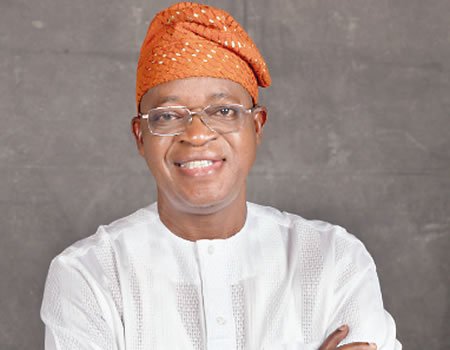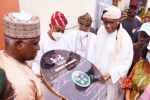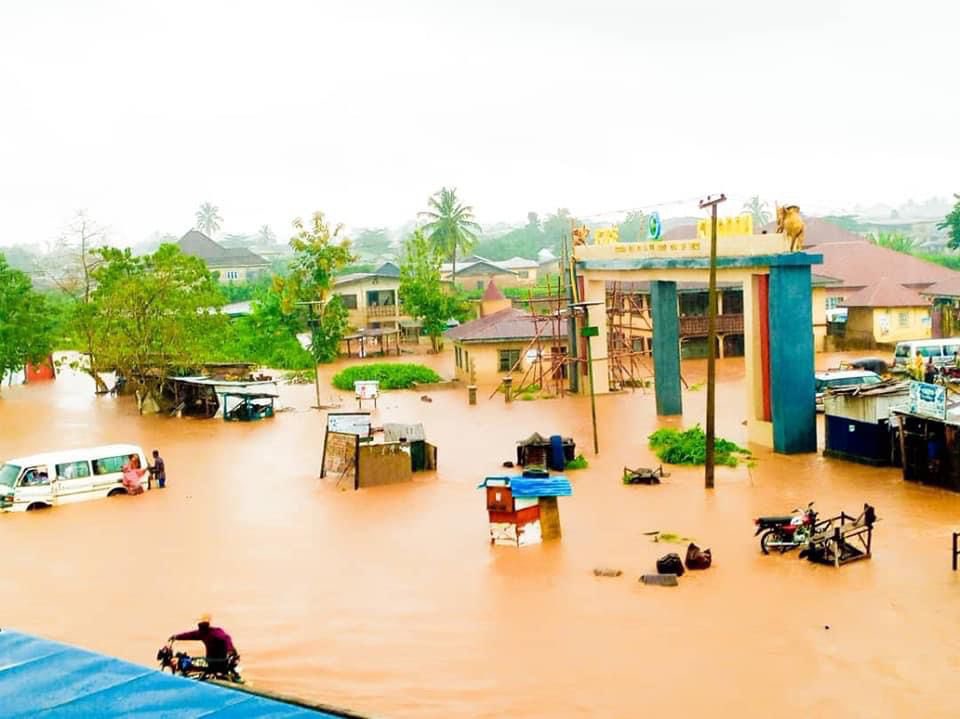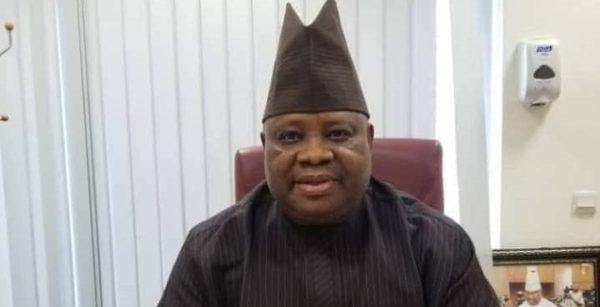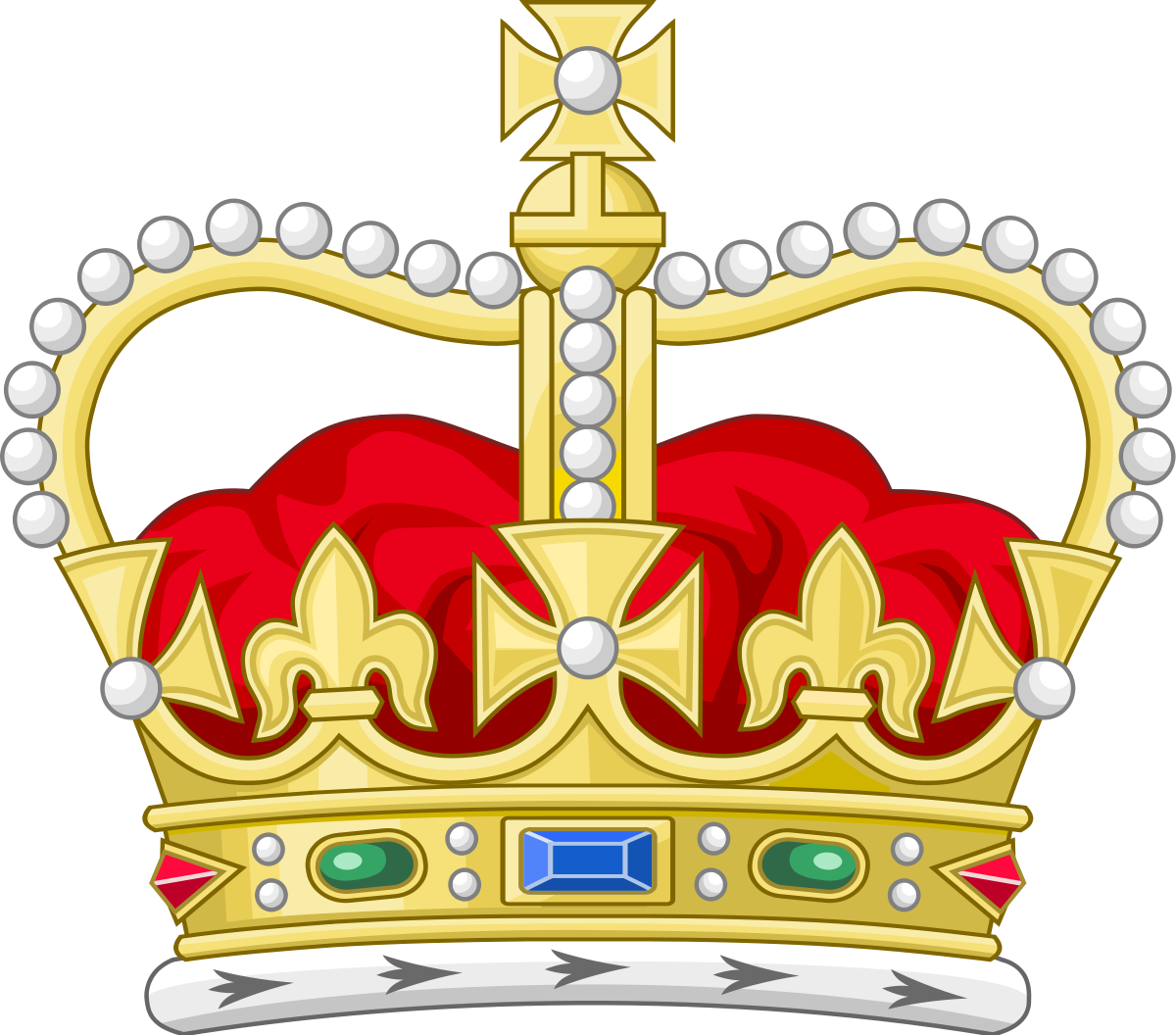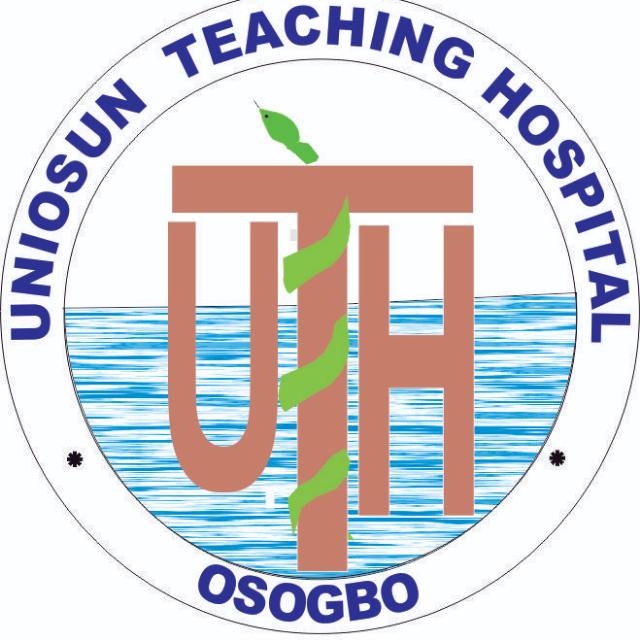By Olowogboyega Oyebade
Are you aware that different countries of the world are finding new things as common grounds for the people to celebrate? Do you know that the Iranians are currently celebrating the 40 yearanniversary of 1979 Revolution, the series of events involving the overthrow of the monarch of Iran, Mohammad Reza Shah Pahlavi, and replacing his government with an Islamic republic under the Grand Ayatollah Ruhollah Khomeini? A revolution that has defined Iran as a major player in global geo-politics? Are you aware that the Chinese Lunar Year festival will commence on 5th February, 2019 to celebrate the beginning of a new year on the traditional Chinese calendar? Do you know that the festival is usually referred to as the Spring Festival in Chinaand is one of the world’s most prominent and celebrated festivals? Do you know that it is the cause of the largest annual mass human migration in the world and a major holiday in China, the Korean Penisular, Vietnam, Tibet, Singapore, Indonesia, Malaysia, Myanmar, Thailand, Cambodia, the Philippines and Mauritius, as well as many countries in North America and Europe? Do you know that Nigeria is to show-case itself to the world this month through its presidential and national assembly elections? Are you aware that the wife of the Governor of the State, Mrs Kafayat Oyetola has launched a foundation which has empowered thousands of women in agriculture? Do you know that the Governor of the State of Osun is to show-case the State through an economic summit any time from now to diversify the State economy? With him at the saddle, the State is enough good news. You say: how? Enjoy this time-out.
Do you know that it is risky to rely on only one source for livelihood? Do you know that diversification reduces extreme pressure on only one particular asset? Are you aware that volatility is reduced by engaging in multiple assets? Do you know that it is folly to put all one’s eggs in one basket? Do you know that the creationist account according to the Holy Bible supports diversification? A stern warning from the book of Ecclesiastes resonates: “But divide your investments among many places, for you do not know what risks might lie ahead”.
Do you read William Shakespeare’s drama? Have you read ‘Merchant of Venice’, a play staged to criticize the shrewdness of the Jews on profiteering at the cost of humanity during the Elizabethan era? Can you believe that diversification of the economy is the game-changing secret of prosperity of ‘Shylock’ in the play, over others? Do you know that as diversification is strongly recommended for individuals, so also it is ticked for all States and countries? The blushing of shrewd Shylock in ‘Merchant of Venice’ interludes:
“My ventures are not in one bottom trusted,
Nor to one place; nor is my whole estate
Upon the fortune of this present year:
Therefore, my merchandise makes me not sad.”
Are you aware of the motive of economic diversification? Do you know that it is the process of shifting an economy away from a single income source toward multiple sources from a growing range of sectors and markets? Do you know that it is a strategy to encourage positive economic growth and development? Do you agree that the current economic down-turn in the country calls for diversification? Do you know that all of us have to cooperate with Mr Adegboyega Oyetola as he wants to diversify the economy of our State by encouraging our youths to key into various economic initiatives and granulate to prosperity? Do you know that these initiatives will increase economic resilience in our State, develop institutional capacity and improve understanding of how economic diversification can be integrated into sustainable development plans, especially those that promote sustainable economic growth and the eradication of poverty in our State? Have you heard the news that the gold deposit in the State of Osun is worth about $5 billion in today’s price? Hurray! The Federal Government of Nigeria has selected Osun and Kebbi States to pilot Gold Purchase Scheme, a programme aimed at increasing revenue accruable from the country’s abundant gold deposit.
Do you know that gold production began in Nigeria in 1913 and peaked in the 1930s? Do you know that it was the 2nd World War that halted it? Do you know that the Nigerian Mining Corporation (NMC) was formed in the early 1980s to explore for gold? Do you know that lack of fund, and the lure of easier profits from oil production led to its failure? Do you know that we only have minor players in the sector using artisanal labour? Do you know that Mr Governor wants to encourage thousands of unemployed graduates to key into artisanal mining in gold as a game-changing measure to sustainable development? Do you know this is a good development? Enjoy this time-out.
Do you know that mining started in prehistoric time? Are you aware that the civilization of that era used stone, ceramics and, later, metals to make early tools and weapons? Yes! Mining is extraction of valuable minerals from the earth. These minerals may include: gold, coal, oil shale, gemstones, limestone, chalk, stone, rock salt, potash, gravel and clay. Mining in a wider sense includes extraction of any non-renewable resource such as petroleum, natural gas, or even water. Modern mining processes involve prospecting for minerals, analyzing the profit potential, extracting the desired materials, and finally reclaiming the land after the mine is closed.
Are you aware that the oldest-known mine on archaeological record is the Ngwenya Mine in Swaziland in Africa which radiocarbon dating shows to be about 43,000 years old? Are you aware that ancient Egyptians and Roman civilizations made use of mines to harvest ornaments for the emperors of the eras? Do you know that the ancient Greek city state of Athens had over 20,000 slaves working for them in the mines to keep the economy going? Are you aware that Philip II of Macedon, the father of Alexander the Great, captured the gold mines of Mount Pangeo in 357 BC to fund his military campaigns? Do you know that he also captured gold mines in Thrace for minting coins as legal tender in markets? Are you aware that the Romans introduced hydraulic mining? Do you know that the out breaks of wars among the empires of the hold gave rise to the manufacture of weapons and a serious promotion for demand for iron-ore to manufacture swords, lances and other weapons? Do you know that the since 16th century England, mineral deposits belonged to the crown, and this ‘regalian right’ was stoutly maintained in colonies? Are you aware that by a judicial decision of 1568 and a law in 1688in England, royal mining rights were restricted to gold and silver despite the fact that England had no deposits of gold and silver? Are you aware that this is the basis of why the Federal Government (representing the Crown under the received English Law) owns all minerals in Nigeria?
Do you know that Hungary revolutionized mining when it introduced blasting in 1627 and established the world’s first mining academy in 1762? Are you aware that mining operations can be grouped into five major categories in terms of their respective resources, which are oil and gas extraction, coal mining, metal ore mining, non-metallic mineral mining and quarrying, and mining support activities? Do you know that of all of these categories, oil and gas extraction remains one of the largest in terms of its global economic importance? Do you know that prospecting potential mining sites, a vital area of concern for the mining industry, is now done using sophisticated new technologies such as seismic prospecting and remote-sensing satellites?
Are you aware that mining companies are corporately classified based on their size and financial capabilities? Yes! Major companies are considered to have an adjusted annual mining-related revenue of more than US$500 million, with the financial capability to develop a major mine on its own. Intermediate companies have at least $50 million in annual revenue but less than $500 million while junior companies rely on equity financing as their principal means of funding exploration. Junior companies are mainly pure exploration companies, but may also produce minimally, and do not have a revenue exceeding US$50 million.
Do you know that there are certain distinct steps to take before mining is done including discovery of the mineral body, mathematical resource estimation of the size and grade of the deposit, pre-feasibility study to determine the theoretical economics of the deposit, estimation and engineering studies including identifying key risks evaluating the financial viability, the technical and financial risks, and the robustness of the project? Are you aware that there must be mine planning to evaluate the economically recoverable portion of the deposit, the metallurgy and ore recoverability levels, the marketability and profitability of the ventures, engineering concerns, milling and infrastructure costs, finance and equity requirements and an analysis of the proposed mine from the initial excavation all the way through to reclamation? Do you know that mining wastes, environmental impact analysis and bio-diversity are put on the table before mining is approved?
Mining techniques can be divided into two common excavation types: We have surface mining and sub-surface mining. Surface mining is done for placer deposits, consisting of valuable minerals contained within river gravels, beach sands, and other unconsolidated materials. The underground mining occurs in the mining of soluble insoluble minerals. Surface mining removes surface vegetation to reach buried deposits. Techniques of surface mining include: open-pit mining, quarrying, strip mining and mountaintop removal. Do you know that we still have landfill mining now popular in our dump-sites by scavengers? Do you know that modern mining involves heavy machinery to remove, break and remove rocks of various hardness and toughness, to process the ore, and to carry out reclamation projects after the mine is closed? Do you know that a new technology has been discovered to mine gold?
Hurray! We have found it. In 2018, Bradley D. Smith, a Chemistry and Biochemistry Professor in University of Notre Dame “invented a new class of molecules whose shape and size enable them to capture and contain precious metal ions. This report has been published by the Journal of the American Chemical Society. The new method “converts gold-containing ore into chloro-auric acid and extracts it using an industrial solvent. The container molecules are able to selectively separate the gold from the solvent without the use of water stripping.” The newly developed molecules can eliminate water stripping, whereas mining traditionally “relies on a 125-year-old method that treats gold-containing ore with large quantities of poisonous sodium cyanide… this new process has a milder environmental impact and that, besides gold, it can be used for capturing other metals such as platinum and palladium,” and could also be used in urban mining processes that remove precious metals from wastewater streams.
As rewarding as mining can be, do you know that it has environmental effects? Do you know that environmental issues can include erosion, formation of sinkholes, loss of bio-diversity, and contamination of soil, groundwater and surface water by chemicals from mining processes? Are you aware that in some cases, additional forest logging is done in the vicinity of mines to create space for the storage of the created debris and soil? Do you know that contamination resulting from leakage of chemicals can also affect the health of the local population if not properly controlled? Do you know that is the reason mining companies in most countries are required to follow stringent environmental and rehabilitation codes in order to minimize environmental impact and avoid impacting human health? Are you aware that these codes and regulations require the common steps of environmental impact assessment, development of environmental management plans, mine closure planning (which must be done before the start of mining operations) and environmental monitoring during operation and after closure?
Do you know that for major mining companies to be qualified for international financing, there are a number of other mechanisms to enforce good environmental standards? Do you know the Equator Principles, IFC environmental standards, and Criteria for Socially Responsible Investing? These are oversight self-regulatory codes of mining companies. Are you aware that in 1992, a Draft Code of Conduct for Transnational Corporations was proposed at the Rio Earth Summit by the UN Centre for Transnational Corporations (UNCTC), but the Business Council for Sustainable Development (BCSD) together with the International Chamber of Commerce (ICC) argued successfully for self-regulation instead? Do you know that this was followed by the Global Mining Initiative which was initiated by nine of the largest metals and mining companies and which led to the formation of the International Council on Mining and Metals, whose purpose was to “act as a catalyst” in an effort to improve social and environmental performance in the mining and metals industry internationally? Do you know that some mining companies have provided funding to various conservation groups to promote the right to make land-use decisions? Do you know that mines are certificated? Enjoy this time-out.
Mines with good practices are certificated through the International Organization for Standardization (ISO), Ceres’ Global Reporting Initiative and some other certification programmes exist for various projects through nonprofit groups. Mining generate large amounts of waste, called tailings. These tailings can be toxic and may be eroded into ponds made from naturally existing valleys. The mining industry has argued that submarine tailings disposal (STD), which disposes of tailings in the sea, is ideal because it avoids the risks of tailings ponds. The environmentalists still hold this practice as illegal. Management of the waste forms a major part of the mine planning process. Waste dump designs must meet all regulatory requirements in the country. Some mines are making use of renewable energy applications to save costs and to improve bio-diversity.
Do you know that the World Bank has been involved in mining since 1955 through grants from its International Bank for Reconstruction and Development, with the Bank’s Multilateral Investment Guarantee Agency offering political risk insurance? Are you aware that between 1955 and 1990 it provided about $2 billion to fifty mining projects, broadly categorized as reform and rehabilitation, green-field mine construction, mineral processing, technical assistance, and engineering?. Do you know that the World Bank established mining codes intended to increase foreign investment? You care to know more about this? Enjoy this time-out.
The year was 1992. The World Bank began to push for privatization of government-owned mining companies with a new set of codes, beginning with its report titled: “The Strategy for African Mining. In 1997.” The Philippine’s 1995 Mining Act led the bank to publish a third report (Assistance for Minerals Sector Development and Reform in Member Countries) which endorsed mandatory environment impact assessments and attention to the concerns of the local population. The codes based on this report are influential in the legislation of developing nations. The new codes are intended to encourage development through tax holidays, zero custom duties, reduced income taxes, and related measures. The results of these codes were analyzed by a group from the University of Quebec, which concluded that the codes promote foreign investment but “fall very short of permitting sustainable development”. The observed negative correlation between natural resources and economic development is known as the resource curse.
Do you know that the market for minerals is volatile? Do you know that since year 2000, the price of gold has been increasing dramatically? Do you know that new legislation for mining industry in African countries is still an issue? That is the reason the World Bank is mid-wiving new regulations to standardize the sector. In 2007 the Extractive Industries Transparency Initiative (EITI) was initiated in all countries cooperating with the World Bank in mining industry reform. Do you know that the initiative aims to increase transparency in transactions between governments and companies in extractive industries by monitoring the revenues and benefits between industries and recipient governments? Do you know that the initiative is monitored by multiple stakeholders including governments, private companies and civil society representatives, responsible for disclosure and dissemination of the reconciliation report? Do you know that the implementation of this initiative has issues on whether to include or exclude artisanal mining and small-scale mining (ASM) from the EITIand how to deal with “non-cash” payments made by companies to subnational governments? Do you know that artisanal mining is clearly an issue in EITI Countries such as the Central African Republic, D.R. Congo, Guinea, Liberia and Sierra Leone and Nigeria?
Do you know that the deepest mine in the world is TauTona in Carletonville, South Africa which is 3.9 kilometres (2.4 mi) deep? Do you know that the Moab Khutsong gold mine in North West Province in South Africa has the world’s longest winding steel wire rope, which is able to lower workers to 3,054 metresin one uninterrupted four-minute journey? Do you know that the deepest mine in Europe is the 16th shaft of the uranium mines in Pribram, Czech Republic, at 1,838 metres (6,030 ft)? Do you know that the deepest open-pit mine in the world is Bingham Canyon Mine in Bingham Canyon, Utah, United States, at over 1,200 metres (3,900 ft)? Are you aware that the largest and second deepest open-pit copper mine in the world is Chuquicamata in northern Chile at 900 metres (3,000 ft), which annually produces 443,000 tons of copper and 20,000 tons of molybdenum? Do you know that the deepest open-pit mine with respect to sea level is Tagebau Hambach in Germany, where the base of the pit is 293 metres (961 ft) below sea level? Do you know that the largest underground mine is Kiirunavaara Mine in Kiruna, Sweden? Do you know that the deepest borehole in the world is Kola Super-deep Borehole?
Do you know that one major concern in the mining business is safety? Are you aware that on 10th March, 1906, there was a mine disaster in Courrières, France involving the death of 1,099 miners? Are you aware of the Benxihu Colliery accident in China on 26th April, 1942, which killed 1,549 miners? Are you aware of the 2007 Ulyanovskaya Mine disaster in Russia, the 2009 Heilongjiang mine explosion in China, and the 2010 Upper Big Branch Mine disaster in the United States? It must be noted that mining has been identified by the National Institute for Occupational Safety and Health (NIOSH) as a priority industry sector in the National Occupational Research Agenda (NORA) to identify and provide intervention strategies regarding occupational health and safety issues. No wonder that the Mining Safety and Health Administration (MSHA) was established in 1978 to “work to prevent death, illness, and injury from mining and promote safe and healthful workplaces for US miners.”
Do you know that there are numerous occupational hazards associated with mining, including exposure to rock-dust which can lead to diseases such as silicosis, asbestosis, and pneumoconiosis? Do you know that gases in the mine can lead to asphyxiation and could also be ignited? Are you aware that mining equipment can generate considerable noise, putting workers at risk for hearing loss? Do you know that cave-ins, rock falls, and exposure to excess heat are also known hazards in mining? Do you know that the current Noise International Recommended Exposure Limit (REL) is 85 dBA with a 3 dBAexchange rate and the MSHA Permissible Exposure Limit (PEL) is 90 dBA with a 5 dBA exchange rate as an 8-hour time-weighted average? Do you know that noise pollution in some mines can cause hearing impairment for miners?
It has been seen that the development of major nations such as China and India and advances in technologies are fueling an ever-greater demand for minerals and the development of extractive industries. . The result is that metal mining activities are expanding and more and more of the world’s metal stocks are above ground in use rather than below ground as unused reserves. The world is fast keying into recycling. Metals are reduced in new products and synthetic fibers are substituted to conserve our mineral reserves. Aluminium used in cans, precious metalsfound in discarded electronics are now recycled. Huge deposits of these materials are got from our land-fills and dump-sites. Do you know that as of 2008, the deepest mine in the world is TauTona in Carletonville, South Africa, at 3.9 kilometres (2.4 mi)?
Do you know that mining industry in Nigeria accounts for only 0.3 per cent of the GDP? Do you know that Nigeria has to import minerals that it could produce domestically, such as salt or iron ore? Do you know that rights to ownership of mineral resources is held by the Federal government of Nigeria, which grants titles to organizations to explore, mine, and sell mineral resources? Do you know that Mining Law is codified in the Federal Minerals and Mining Act of 1999? Do you know that as part of the programmes to privatize the sector sold licences to some States and private individuals? The State of Osun partook in the purchase of mining licences. Osun State Mining Corporation was established in year 2007. This Mining Corporation has changed its name to Omoluabi Mining Corporation while the government also established the Mineral Resources Management Committee. The State Government pays an annual licence fee of fifty six million Naira to the Federal Government.
Today, thousands of other people from other sections of the country are now in the hinterland of Osun to partake in artisanal mining of gold. In what looked like a pragmatic approach to end the ugly situation of indiscriminate mining activities, the Federal Ministry of Mines and Steel Development, through its Safer Mining Project, visited our State recently to inspect, train and reward stakeholders in the gold deposit communities. According to the ministry, the project was aimed at achieving three things; protect individuals, protect the environment as well as encourage local miners to practise safer mining. The coming of the Federal Government team therefore signified the beginning of another regime to further enhance the potential of the sub sector to supervise and monitor the economic potential of the sector. In a Town Hall meeting held at Ibodi last year, the Federal Government team took community leaders and other stakeholders through the importance of the project to the economy, environment and individuals who are working in different communities for mining activities. Speaking on behalf of the team, Dr. Adebola Odunsi, charged the small-scale miners to always prevent illegal miners into various reserves as well as protecting the environment. He stated that anybody carrying out mining activities should either get a license or be registered under an agent. On behalf of the Federal Ministry of Mines and Steel Development, he used the opportunity to appeal to minersto report any illegal miner to the police.
At the occasion, Dr Odunsi listed the two types of mining to include; the one that is harmful and another that is harmless. He pointed out that mining is harmful if it endangers the lives of miners or dilapidates the environment, adding that harmless mining leads to safety of miners, sustainability of environment and generation of revenue to economy. According to him, in harmful mining, everybody loses; the miner, the community and the country but in harmless mining, it is a win-win situation for all the stakeholders. Dr Odunsi informed the stakeholders that the project was informed by the increasing rate of heavy lead and mercury poisoning associated with gold mining, especially in Zamfara State, which led to the death of about 400 children. He asserted that even though government had intervened promptly to control the situation and give adequate treatment to people affected, the ministry thought of something preventive measures, hence designed the Safe Mining Project, to sensitiseand raise the level of awareness among local miners.
According to Odunsi, the Federal Government is aware that small-scale gold miners are exposed to occupational and environmental hazards at work and also aware of the negative impact of some of their activities on the host communities, hence the need to educate the miners on the modern techniques. He asserted that mercury is commonly used for gold mining to remove the gold from the hub and this can be harmful if necessary steps are not taken. He admitted that the State of Osun’s gold reserve is more sedimentary, and that it poses lower danger compared to places like Northern part, where the gold is attached to rock. This notwithstanding, he urged miners at the various reserves, who are exposed to mercury to take precautions to prevent poisoning themselves and their families. The miners are tasked to always make sure that they fill their pitch after digging, to prevent accident and environment degradation. The miners are advised against digging without wearing protective clothing, adding that they must stop the use of chemicals such as mercury and cyanide in their mining activities in order not to expose themselves to grave health issues and pollution of the rivers as well as the flora and fauna.
He cautioned that poor mining activities could lead to serious health conditions such as infertility, severe cough, itching, and can also damage internal organs like the kidneys and the liver if proper kits are not used by miners. Miners have been advised to always wear helmet, goggles, face mask, overall, hand gloves, and boots, remove the protective clothing; take a bathe and wear neat clothes back home after work. They are advised to makesure that they cover up every hole they dig while searching for gold and that if courses of rivers are diverted while digging, the courses must be returned to normal after mining activities. We must commend the Federal Government for its giant initiative to commence a Gold Purchase Scheme aimed at increasing revenue accruable from the country’s abundant gold deposit, using Osun and Kebbi States as pilot for the project. The scheme will include training and equipping of artisanal miners, provision of extension services and off-take of all gold produced by participants in the scheme. As our youths are preparing to key into the initiative, we must urge them not to be wiser than government in their transactions. They should comply with all the prescribed safety regulations to themselves, the environment of the host communities and the entire State and Nigeria. There is no time again for weakness. But there should be no time for recklessness, too. As we all engage in promoting employment through this sector, let all the stakeholders, including our youths, act responsibly. Alfred Nobel said: “To spread enlightenment is to spread prosperity., not individual riches and with prosperity, most of the evil which is a legacy from the dark ages will disappear.”

